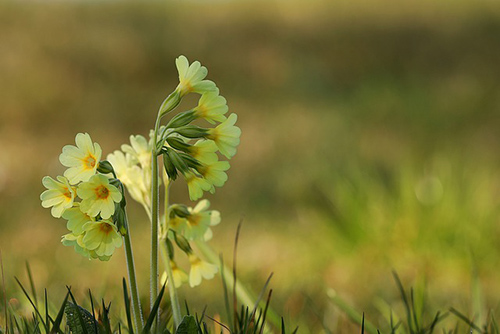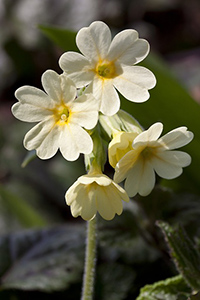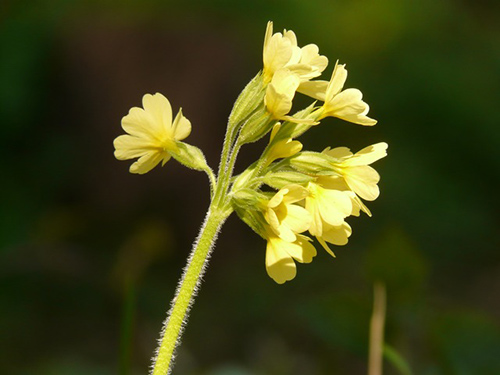Contents
The primrose plant is one of the first to bloom in spring. Its flowers are highly appreciated as ornamental and aromatic. The great physicians and botanists of ancient times did not know this plant, which has been used in phytotherapy since the 16th century.

Primrose Plant Scientific Facts
- Scientific synonyms: Primula Officinalis L.
- Other names: Butter rose, English cowslip, cowslip.
- French: Primevere.
- Spanish: Primavera.
- Environment: Meadows and sunny forests of the mountainous regions in Europe, from which it was carried to some warm areas of America.
- Description: This is a vibrant, herbaceous plant of the Primulaceae family. It grows from its base with large, oval-shaped leaves. The stem is 15 to 30 cm high and ends in a yellow flower umbel.
- Parts of the plant used medicinally: The root, the rhizome (underground stem), and the flowers.
Healing Properties and Warning

The primrose plant’s root and rhizome contain many triterpenic saponins, the most important of which is primuline. These substances have expectorant and mucolytic properties. They also include two phenolic heterosides, derivatives from the salicylic acid (primaverine and primulaverine), which, employing hydrolysis, become derivatives of the salicylic acid and give the plant its analgesic anti-inflammatory and antirheumatic properties. Remember that aspirin is acetylsalicylic acid, a synthetic derivative of salicylic acid. Hence, the two main applications of the primrose root are:
- Respiratory disorders require an increase in the fluidity of the bronchial secretions to ease their expulsions: acute and chronic bronchitis, bronchial asthma, and bronchial pneumonia, among others. The plant is also helpful in simple bronchial catarrh and in easing coughing fits. Although the primrose saponins’ thinning and expectorant properties are not as strong as those of Senega Snakeroot, it is a valuable plant.
- Rheumatic disorders, gout, and externally applied as an anti-inflammatory in bruises, sprains, and muscular aches.
Moreover, the flowers of the primrose plant contain flavonoids and carotene (provitamin A). They have two main applications:

- Primrose treats migraines and headaches because of its antispasmodic and sedative properties. Its tasteful flavor makes the primrose infusion a good remedy for calming hyperactive or nervous children.
- Because of its depurative and diuretic properties, it treats gout and kidney stones combined with other diuretic plants.
WARNING! Some garden-growing varieties of the primrose plant have urticant hairs on their leaves, which may cause skin irritation and even allergic reactions.
How to use Primrose
- Decoction with 30-50 g of ground root and/or rhizome per liter of water, boiled for 15 minutes. Drink three or four hot cups daily, sweetened with honey.
- Infusion with 20-30 g of flowers per liter of water. Drink up to five cups a day.
- Compresses, soaked in the same infusion used internally, but slightly more concentrated, then applied on the affected area.
DISCLAIMER: All content on this website is presented solely for educational and informational objectives. Do not rely on the information provided as a replacement for advice, diagnosis, or treatment from a qualified medical expert. If you are pregnant, nursing, or have any preexisting medical concerns, talk to your doctor before using any herbal or natural medicines.
REFERENCES
- George D. Pamplona-Roger, M.D. “Encyclopedia of Medicinal Plants.” George D. Pamplona-Roger, M.D. Encyclopedia of Medicinal Plants. Ed. Francesc X. Gelabert. Vols. 1 San Fernando de Henares: Editorial Safeliz, 2000. 328, 329. Print.
- https://www.nccih.nih.gov/health/evening-primrose-oil
